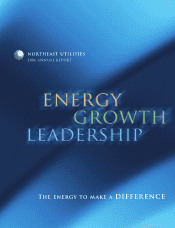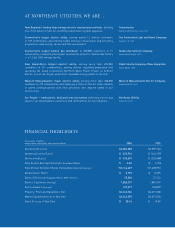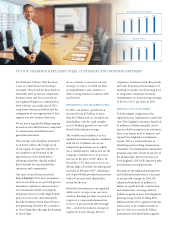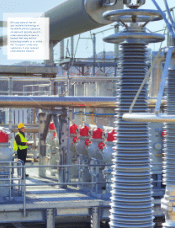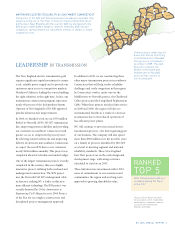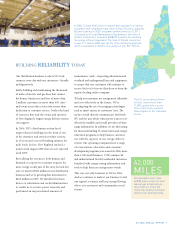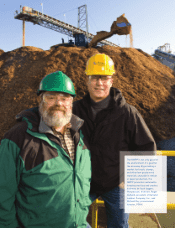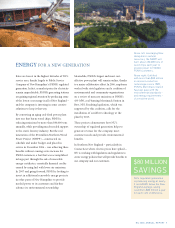Eversource 2006 Annual Report Download - page 11
Download and view the complete annual report
Please find page 11 of the 2006 Eversource annual report below. You can navigate through the pages in the report by either clicking on the pages listed below, or by using the keyword search tool below to find specific information within the annual report.
Above left: Leveraging New
Hampshire’s natural
resources, the NWPP will
burn about 450,000 tons of
wood chips each year to
provide power for 50,000
PSNH customers.
Above right: Outfitted
with more than $50 million
in emission-reduction
technologies since 1989,
PSNH’s Merrimack Station
has kept pacewith the
environmental standards –
and energy requirements –
of a modern world.
Rates are lowest in the highest latitudes of NU’s
service area, thanks largely to Public Service
Company of New Hampshire’s (PSNH) regulated
generation. In fact, as market prices for electricity
remain unpredictable, PSNH’s generating stations
aregaining regional attention by producing some
of the lowest-cost energy in all of New England –
and the company is investing in some creative
solutions to keep it that way.
By converting an aging coal-fired power plant
into one that burns wood chips, PSNH is
reducing emissions by more than 380,000 tons
annually, while providing much-needed support
tothe state’s forestry industry. But the real
innovation of the $74 million Northern Wood
Power Project (NWPP) – constructed on
schedule and under budget, and placed in
service in December 2006 – was achieving these
benefits without causing a rate increase for
PSNH customers, a feat that was accomplished
in large part through the sale of renewable
energy certificates, essentially financial credits
earned by using fuel with lower air emissions.
In 2007 and going forward, PSNH is looking to
invest in additional renewable energy projects
in other parts of New Hampshire to provide
needed power to its customers and further
advance its environmental stewardship.
Meanwhile, PSNH’s largest and most cost-
effective power plant will remain online, thanks
to a major collaborative effort. In 2006, employees
worked with state legislators and a coalition of
environmental and community organizations
on a review of mercury emissions at PSNH’s
433-MW, coal-burning Merrimack Station in
Bow, NH. Resulting legislation, which was
supported by this coalition, calls for the
installation of scrubber technology at the
plant by 2013.
These projects demonstrate how NU’s
ownership of regulated generation helps to
generate revenue for the company, meet
customerneeds and provide environmental
benefits.
InSouthern New England – particularly in
Connecticut where electric prices have spiked –
NU is working with legislators and regulators to
create energy policies that will provide benefits to
our company and our customers.
ENERGY FOR A NEW GENERATION
NU 2006 ANNUAL REPORT 9
$80 MILLION
SAVINGS
NU’s regulated generation
is producing energy at nearly
2cents/KWH below the New
England average, saving
customers $80 million a year
for each cent of difference.

